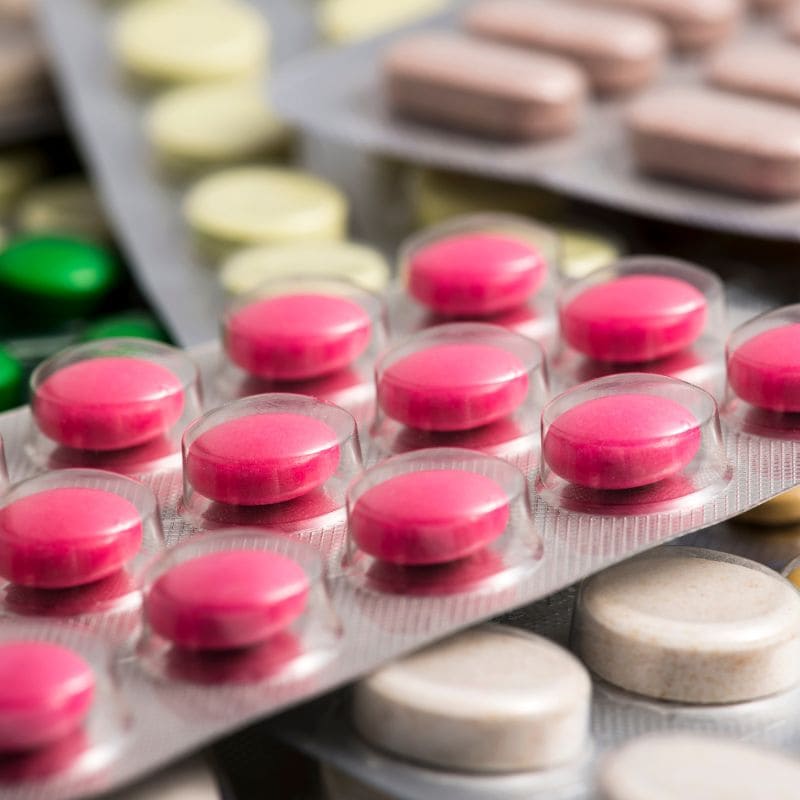
Blister packs are a type of packaging that feature preformed visible cavities, a shell, or a pocket, most often in see-through material that is adhered to a coated paperboard, allowing consumers to see what is inside. This preformed plastic pocket is usually heat sealed to the paperboard or foil backing. It can be a daunting task to choose the best type of paperboard backing for blister packaging with many options to choose from in many factors to consider.
Considerations When Choosing Paperboard Backing for Blister Pack
Some of the most important considerations when evaluating paperboard backing for blister packs include the shape of the product, the design, the branding, any tooling or prototyping necessary, printing, and sealing. Different types of blister packs include full-face blisters, footed blisters, face seal blisters, and combo blisters.
Types of Material Available for Paperboard Blister Backing
The blister package contains two basic components, the plastic front with pockets and the paperboard backing that typically contains most of the branding message and retail information. There are many different types of material available for paperboard backing, some of the most common types include:
- Clay-coated board (C1S/C2S)
- Solid bleached sulfate (SBS)
- Recycled paperboard
- Tear-resistant board
- Laminated board
- Chipboard
Among these, two of the most popular choices are the Clay coated board (C1S/C2S) which is a type of SBS and recycled paperboard. This is mainly due to affordability, availability in the market, and packaging capabilities.
Clay-Coated (C1S/C2S) SBS
The difference between C1S and C2S is that C1S is Clay coated only on one side which provides a shiny, smooth surface while the back surface has a matte surface. C2S means the paperboard is Clay coated on both sides to provide a shiny, smooth surface on both the front and the back. There are advantages of using each type as Clay coated SBS provides many benefits for packaging, printing, sealing, and point-of-purchase (POP) displays.
Benefits of Clay-Coated Board (C1S)
Packaging – works best for Face-Seal Blisters
Printing – enhances the visual appearance of images on the shiny, coated side with minimal ink absorption. The matte finish on the uncoated side has greater ink absorption and reduced visual image quality.
Sealing – the best seal is on the clay-coated side only
POP Display – a good choice for crisp design with vibrant colors on the front and plain printing on the back such as UPC codes or simple text in black ink.
Benefits of Clay-Coated Board (C2S)
Packaging – the best choice for trapped blisters or back seal, when two cards are sealed together.
Printing – the glossy, shiny surface on both sides enhances visual images with minimal ink absorption on both sides.
Sealing – provides good sealing for both sides
POP Display – allows for vibrant colors and design with crisp branding on both sides
Depending on the considerations listed above such as the type of blisters0—–rt54444, printing requirements, and sealing options, both C1S and C2S provide many benefits although the double-coated C2S will cost a bit more than C1S.
Benefits of Recycled Paperboard
Recycled paperboard also provides many benefits with a high percentage of recycled paper content; it is a much more sustainable packaging option. Recycled paperboard provides many benefits such as:
- Sustainability – companies that choose recycled paperboard for their blister pack backing are choosing a product manufactured with more sustainable materials and processes to improve their corporate responsibility.
- Product lead time – recyclable products are often more readily available which can lead to improved production lead time.
- Various packaging styles – recycled paperboard is available in many packaging styles, often used for Trapped Blisters with two cards sealed together or Face-Seal blister packs.
- Sealing – typical sealing methods of heat sealing are best on the front side of recycled paperboard.
Consulting with an experienced contract packaging company will help you to know your options to choose the most effective and cost-efficient type of material for your blister packs.
PPS Is an Experienced Contract Packaging Company
Peoria production solutions, PPS, is an experienced contract packaging company providing packaging, repackaging, packing, bag filling, and palletizing services. PPS is experienced in the many types of packaging materials and offers a wide range of secondary packaging solutions such as:
- Blister packs
- Club packs
- Clamshell packaging
- Point-of-purchase (POP) displays
- Variety pack packaging
- Gift set packaging
- Cello wrapping
PPS offers these secondary packaging solutions along with many other production services to function as an extension of your production team. We offer these many packaging and repackaging services including kitting and assembly, all customized to meet your specifications.
PPS is a leading contract packaging company offering a wide range of services with more than 80 years of experience. We follow strict quality policies as part of our ISO9001:2015 registration, delivering quality products on time. Contact us to learn more about improving your packaging process with tips from contract packaging experts.

